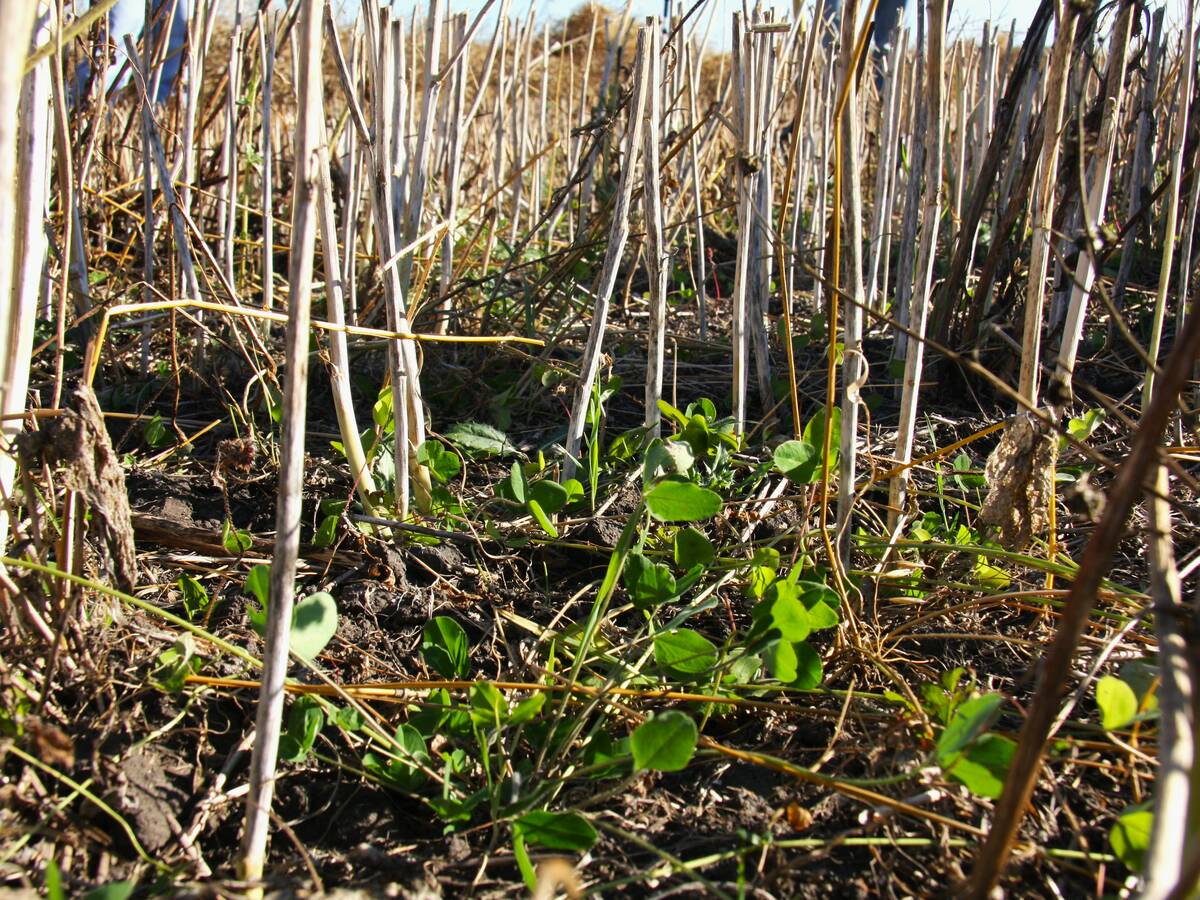Much of the tracks versus wheels discussion over the past 25 years has focused on compaction and working in wet conditions. But what about fuel consumption?
The underlying assumption has always been that it must take more diesel to pull a big heavy rubber track through a rotation than it does to rotate a round tire.
However, testing conducted in southern Manitoba in 2015 proved the assumption wrong. Rubber tracks require 11 to 15 percent less energy than tires in real-life field conditions, according to Stephen Foord, engineer with Elmer’s Manufacturing at Altona Manitoba.
Read Also

Saskatchewan project sees intercrop, cover crop benefit
An Indigenous-led Living Lab has been researching regenerative techniques is encouraging producers to consider incorporating intercrops and cover crops with their rotations.
Foord conducted the research on a field adjacent to the factory where Elmer builds driven and non-driven rubber tracks for implements.
The fuel reduction benefit of 11 to 15 percent for rubber tracks is the average of dozens of passes made pulling the same grain cart on tracks and on wheels.
Foord says he was prompted to do the comparisons after seeing a similar study done by an American university, but with lower weights than those typically seen on Canadian prairie farms.
“We tested with a grain cart and compared wheels to tracks at the same weights. We tested on fresh tilled ground, tilled ground that dried for a few days and untilled canola ground. But we didn’t find any really bad mud conditions,” says Foord, adding that he also tested on concrete for a reference.
“We did three passes with each tire or track setup and for each soil condition. The runs were about 400 metres for each pass. Weights in the cart ranged from empty up to 100,000 pounds of grain.”
Most people look at tracks, then at wheels and automatically reach the instinctive conclusion that tracks require more energy to turn. Foord says it may look that way, but tires and tracks behave differently.
“With wheels you have a point going down into the ground. The bottom of the tire always creates a centralized hole, which the cart has to go through. The bottom of the tire creates a berm in front of it, even in dry conditions. The tire is always trying to pull itself over that berm and out of the rut.
“With a track, there’s no concentration of weight so there’s only a very small berm in front. Weight is spread out behind the leading edge. Tracks ‘float’ or stay higher on top of the soil, reducing what engineers describe as rolling resistance.”
He says his study focussed on non-driven TransferTracks, which are designed to be interchangeable with wheels and so more relevant for most farmers.
Foord adds that Elmer’s larger track system is designed for a higher weight range that wheels don’t cover. While wheels pulled easier than tracks on concrete, there was less resistance pulling tracks in all field scenarios.
Although the study focused on TransferTracks, Foord also compared energy required to pull the larger track system.
Both tracks pulled easier than wheels, but the lighter TransferTracks required less horsepower at weights below 35,000 lb. per side, making them suitable for use with an air-seeder cart, small grain cart or a rolling water-fertilizer tank.
In a news release from Elmer’s, Hartney, Man., producer Tim Morden said his experience pulling a large capacity Bourgault cart fitted with Elmer’s TransferTracks supports Foord’s findings.
“When we had duals on the back of the cart, dirt would build up in front of the wheels and slow it down, making it hard to pull. This didn’t happen with tracks,” says Morden, adding that the biggest difference with tracks is reduced compaction and rutting, especially in wet conditions.
The study concluded that reduced energy requirements not only result in better fuel efficiency, but also can allow growers to use higher speeds in the field, or pull wider drills with the same tractor.
For more information, contact Foord at 204-324-6263 or visit ElmersMfg.com.
















